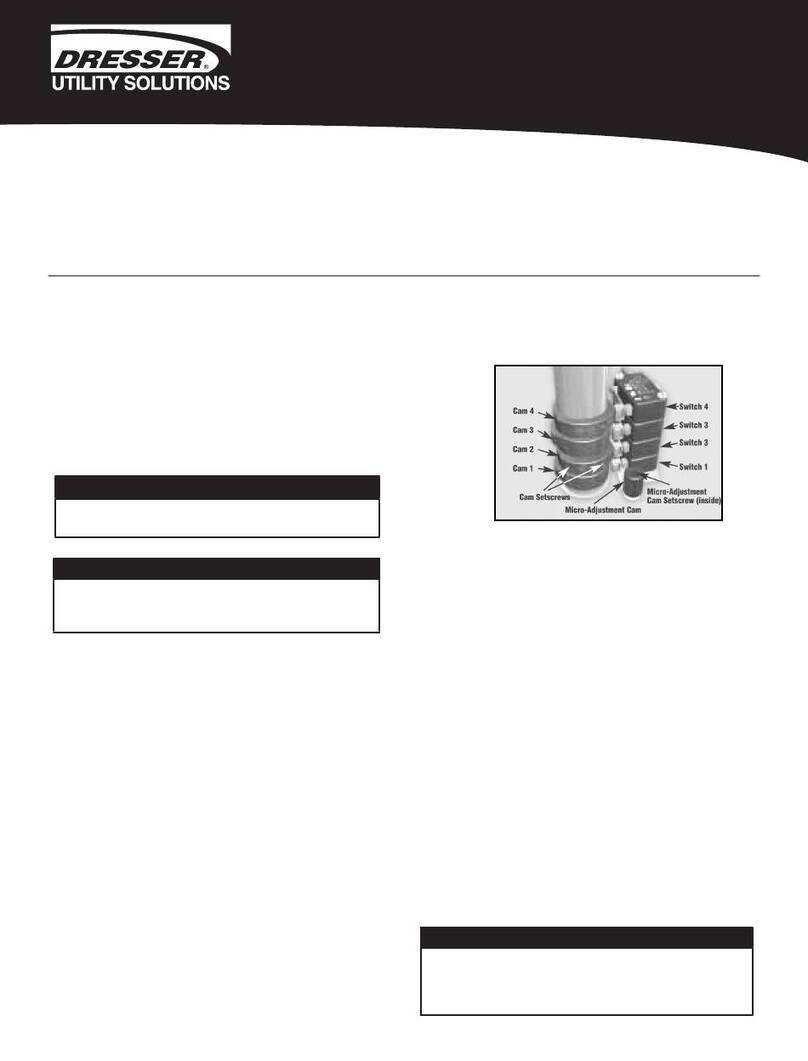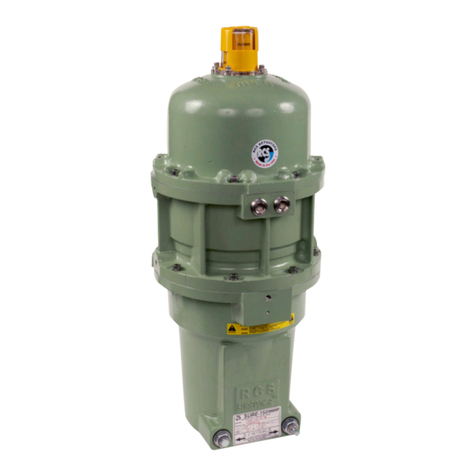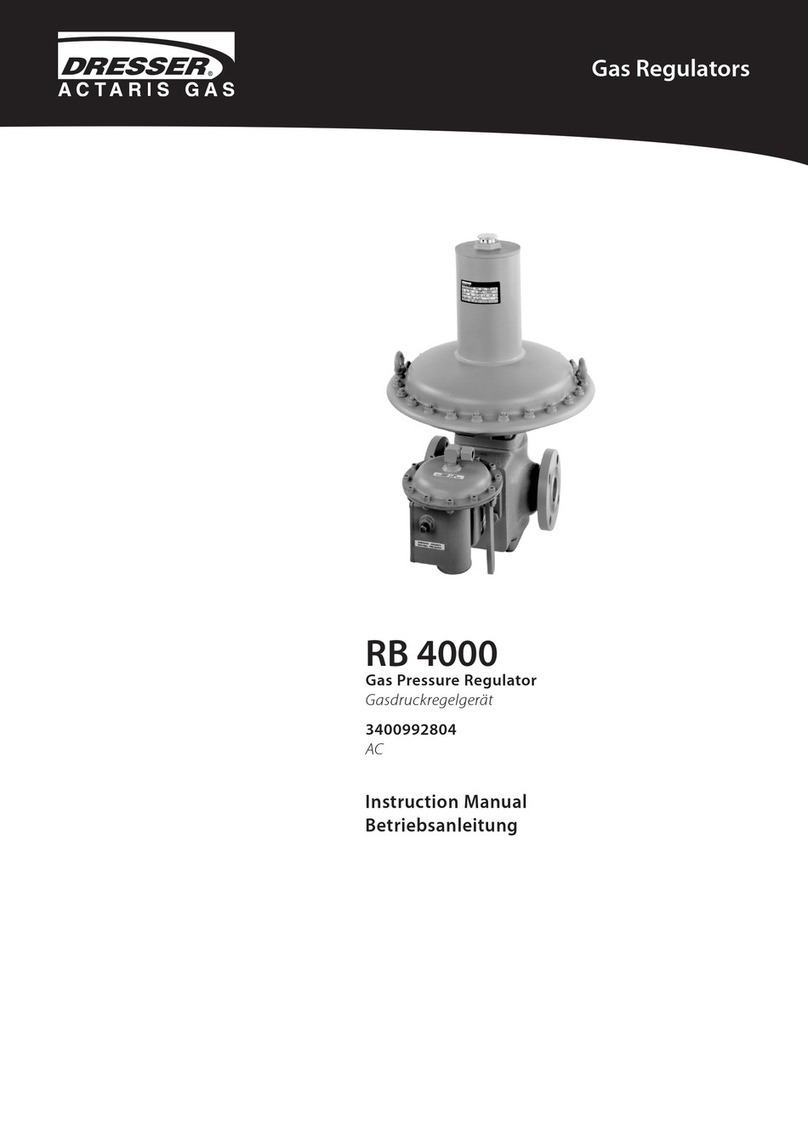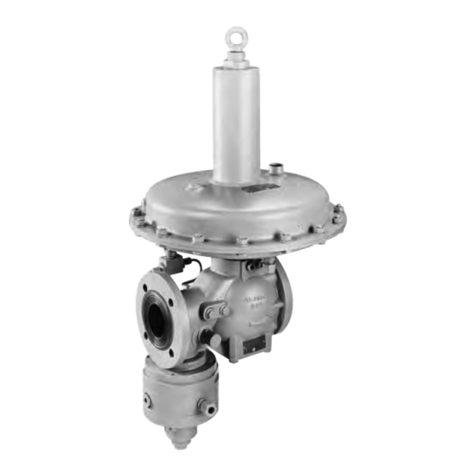
1
Safety First
In the maintenance and operation of mechanical equipment, SAFETY is
the basic factor which must be considered at all times. Through the
use of the proper clothes, tools and methods of handling, serious
accidents causing injury to you or your fellow worker can be prevented.
Throughout this manual are listed a number of safety precautions.
Study them carefully and follow them; also insist upon those working
for you do the same. Remember, an accident is usually caused by
someone’s carelessness, neglect or oversight.
CAUTION
To prevent ignition of hazardous atmospheres, do not
remove actuator cover while curcuits are live.
Installation
1. Operate valve manually before installing actuator and place into
open position.
2. If valve is equipped with mechanical position stops they should
be removed, but care should be taken not to damage or remove
necessary parts from the valve.
3. When actuator is supplied separately from valve, actuator will
be shipped in valve open position and care should be taken to
maintain proper alignment between the actuator and valve
shafts. If actuator and valve shafts are not in correct alignment
repeat operation number one (1) with correction as required.
Direction of rotation is defined as the direction the actuator
output shaft rotates (CW or CCW) as viewed from above the top
of the actuator.
4. Mount the actuator to the valve. The actuator is usually mounted
parallel to the run of the pipe. Tighten all bolts and nuts evenly,
taking care to center the actuator on the valve stem. It is often a
good idea to manually cycle the actuator while the mounting
bolts are somewhat loose. This will allow the unit to center
itself.
5. Loosen socket set screw and remove the manual declutching
knob (Models MAR/DCR10, 50 & 90 only).
6. Remove the hex bolts located around the enclosure of the
actuator.
7. Wire per diagram, or if actuator is of special design, wiring
diagram is included with unit. Wiring diagram is drawn with the
actuator in the open position. Use #18AWG stranded wire or
better, for field hook-up.
8. Manually operate the actuator from one extreme to the other
several times.
To Manually Operate:
Models MA8, MAR8:
• Manual operation is accomplished by use of an open-end
wrench on the hex stock-coupling adapter.
• Direction of rotation and or position can be checked by
indicator located on output shaft.
• Avoid turning beyond normal open/close travel.
Models MAR10, 50 & 90:
• Pull the black declutching knob (A) all the way up and hold.
Gently rock shaft back and forth with wrench to disengage, and
rotate to desired position as indicated by the arrows.
• Actuator will automatically re-engage when “knob” is released
and electrical power is applied.
• Avoid turning beyond normal open/close travel.
Models MAR100, 120, 160, 250, 800, 1600 & 4000:
• Depress and rotate handwheel slowly until detent is felt to
engage.
• Turn handwheel in desired direction (note markings on wheel
and check position by indicator located on output shaft).
• Avoid turning beyond normal open/close travel.
• When handwheel is returned to raised position, electrical
operation is restored (see manual cut-off switch).
Manual cut-off switch:
When handwheel is depressed for manual operation, an integral
cut-off switch prevents injury due to unexpected restoration of
electrical power and is automatically reset when handwheel is
returned to raised position. (Models MAR100, 160, 250, 800,
1600 & 4000 only)
MAR10, 50 & 90 Only
Manual Declutching Knob
MAR/DCR Series Groups 3, 9, 12, 16, 25 &40
Installation Manual
REQUEST A QUOTE AT WWW.AUTHORIZEDPARTS.COM






































